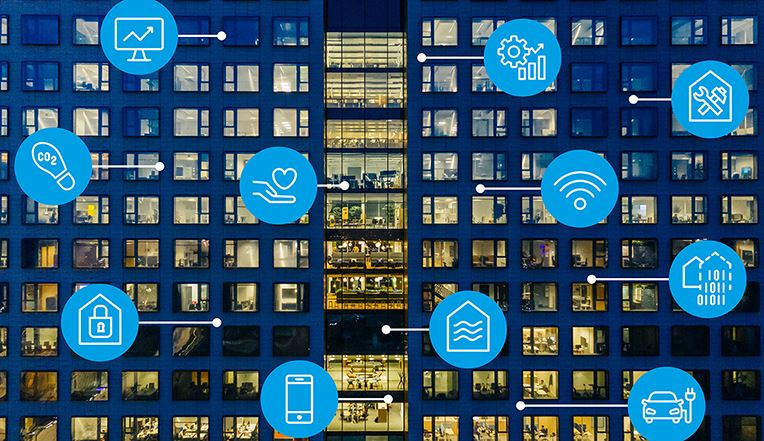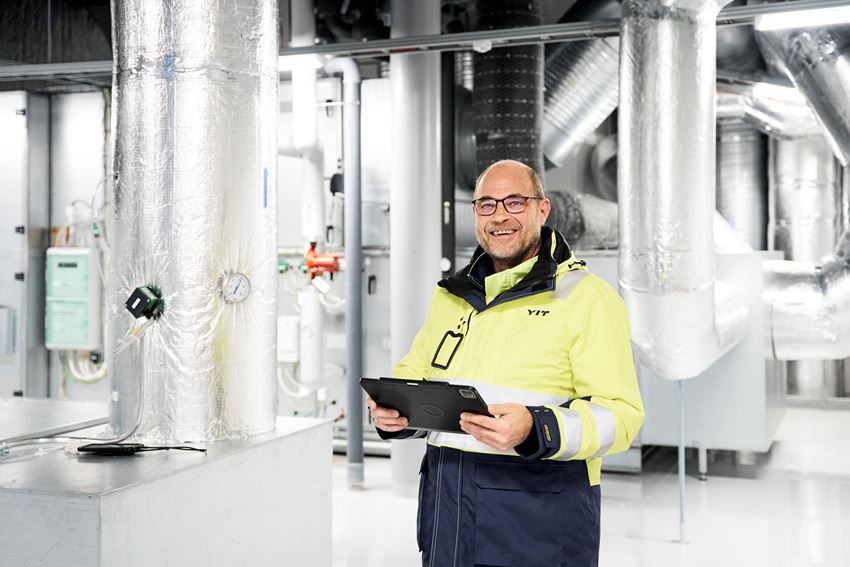Services
Smart Building

Smart buildings are sustainable
Intelligence and data help create more human-centred and flexible offices and industrial buildings and a more sustainable built environment.
Smart buildings make everyday life easier for both users and owners
YIT’s Smart Building concept improves the comfort, efficiency, productivity and eco-friendliness of buildings by consolidating the data from all of the building’s technical systems on a single platform. Smart buildings benefit property owners, maintenance providers and users alike.
It all starts with standardised data and practices
The YIT Smart Building concept consists of sensors, the building’s digital twin and end-user interfaces that enable data-driven management and sustainable and safe premises, not forgetting services.
Data consolidation and a standardised way of processing and utilising data at all stages of the property's life cycle are at the core of the Smart Building concept. The concept is based on the global REC (RealEstateCore) standard.

YIT’s smart buildings are covered by technical and functional requirements, as well as instructions for the entire life cycle of the building, from design through construction to the use and maintenance phase. These requirements and instructions ensure that all parties of the construction project know how to follow the concept and standards. It also benefits the life cycle services of the property when all the requirements are taken into account in the building’s design stage.
Smart Building solutions are also well suited for a variety of industrial properties, from data centers and production plants to logistics centers. They are particularly well suited for demanding applications, where conditions must be kept stable without compromising the production process.
How do smarter buildings meet different needs?
Thanks to standardised data, the property owners can:
- optimise the use of the space
-
saves energy and costs
-
create comfortable indoor conditions (e.g. for heating, cooling and air conditioning)
-
better riskmanagement
-
get data for sustainability reporting and certifications to get green finance
-
get an increase in the value of their property
the user of an industrial plant may receive:
- proactive information on the functionality of the devices
- recovery of waste heat
- stable conditions to ensure the functioning of sensitive equipment
- significantly better energy efficiency and emission reduction
users of the space can:
- reserve workstations and meeting rooms more easily
- find information and colleagues more easily
- gain access to the space with the mobile application
Data also makes it easier to create new services.
Seamless cooperation between data and services can both reduce and shorten waiting times, maintenance downtime and other unpleasant waiting in daily work. Data also supports the creation of new services.
Moreover, the open and standardised approach can help make the services in and around the building, such as public transport, more accessible to the user.
Contact us and ask more about Smart Building solutions
Juho Siitonen
Data Centers, Building Systems and Smart Building








